The experience of local wars and armed conflicts of the late 20th and early 21st century shows that the fighting acquires increasingly the characteristics of guerrilla warfare, where most of the combat is either a raid, ambush, bombing of checkpoints and/or sabotage. The armed forces of the USSR and its inheritor, the Russian Federation, as well as the USA, have faced this problem more than anyone else. Both countries have vast experience in the use of sniper rifles, as well as some of the premier sniper schools for the development of sniper weapon systems and the training of specialists for sniper work.
Modern sniper rifles can be divided into three main categories, depending on the intended task and the range required to successfully engage the target.
The first class includes weapons designed for sniper work at distances of up to 200 metres. These, as a rule, are sound suppressed rifles (or guns with scopes and PBS) of smaller calibre, including .22 calibre Long Rifle, 5.56×45 NATO, 5.43×39, and 9×39 (SP-5, SP-6, PAB-9). Weapons of this class are mainly used for operations in an urban environment (including use by police, such as SWAT units), for the elimination of sentries, silent destruction of the enemy soldiers, interfering in the implementation of basic operational tasks, and in various special operations missions both of a military and law enforcement nature. These types of rifles will not be the focus of this article.
The second class of sniper rifles encompasses the bulk of military sniper rifles with standard calibers of 7.62×51 NATO, 7.62×54, and .300 Winchester Magnum. Such weapons are focused on performing all major types of combat sniper work at distances from 300 to 800 metres.
Finally, the third class includes long-range rifles chambered for powerful ammunition types such as .50 BMG (12.7×90), 12.7×108 (arr. 1930/38.), .338 Lapua Magnum (8.58×71) and a few others. These systems are, in fact, a new class of military weapons, which have appeared relatively recently. They are designed not only for the liquidation of human targets at distances of up to 2000 metres, but also to fire at embrasures, eliminate targets through hard cover, to disable light-armoured objects including vehicles, and in counter-sniper operations.
Main Sniper Rifles of the U.S.
American M110. The M110 Semi-Automatic Sniper System (SASS) is a semi-automatic sniper rifle based on the AR family of rifles. It was developed and manufactured by Knight’s Armament Company to replace the M24, which showed its inadequacy in meeting many of the battlefield requirements encountered in the wars in Afghanistan and Iraq. The M110 marries the 7.62×51 (.308) calibre round and a 20 inch barrel in the same basic small arms platform as the ubiquitous M4 carbine, and largely functions in exactly the same way. The special features of this sniper platform include: a trigger mechanism with a two stage trigger, which improves the shooting accuracy with a predictable time of the shot, an adjustable-length butt stock (in later models), two additional swivels on the butt stock, and a channel in the charging handle for the removal of the residual powder gases away from the shooter’s face when using the monolithic type of muffler bracket for the scope mount. During operations in the military actions in Afghanistan and Iraq, claims were made by the US military about the low reliability and insufficient accuracy of the rifle, and also the fragility of its components. In 2016, information appeared alluding to the fact that this sniper rifle will probably be replaced by the G28 rifle from the Heckler & Koch company. It was adopted by the US army in 2008 and is the main weapon of snipers and marksmen in U.S. Army infantry units of 7.62x51mm calibre. The claimed accuracy is of no more than 1.3 MOA (accuracy of 1 MOA is equivalent to 2.9cm at a distance of 100 metres) when using ammunition of match-grade (the highest quality cartridges).
The rifle was basically developed as a stop-gap to provide light infantry squads with a weapon with improved range and the power to eliminate a human target with one round. Although it weighs in at approximately 7 kgs. (15 lbs.) loaded (with scope and suppressor fitted), the rifle’s length can be reduced to only 40.5 inches when the stock is all the way retracted (46.5 inches when suppressor is fitted). Ironically, the M110 seems to remedy many of the shortcomings of the M4 carbine by giving the infantry squad a weapon more along the lines of the traditional battle rifle: a barrel length of 20 or more inches, a high calibre rifle round, and an overall length and loaded weight closer to that of the M1 or M14.
American M24 (M24A2/M24A3). A military and police version of the Remington Model 700 rifle, produced by Remington Arms. The M24 is the main sniper rifle used by designated marksmen of the US Army. In the middle of the 1980s, M21 semi-automatic sniper rifles, based on the M14 rifle, started becoming inoperable, because of an acute lack of spare parts. Furthermore, the changed geopolitical situation at this time had shifted the center of US military operations from Europe to the Middle East. Fighting in an open desert environment demanded a precision rifle able successfully engage targets at distances of up to 1000 meters. The Remington 700 won the tender in competition with the Austrian Steyr SSG69. The M24 is a bolt-action rifle. The butt plate is regulated – up to 69 mm – for its operator. The Leupold Ultra M3A 10×42mm fixed-power scope has the magnification of 10x or 12x, an elongated-shaped mil-dot wire reticle and a compensator to check the reduction of the trajectory of the bullet. The M24 utilizes М118SB rounds. The sighting equipment is also designed for the М118SB. The usage of other 7.62×51 mm caliber NATO rounds demands further sighting calibration. The claimed accuracy with match-grade ammunition is up to 1 MOA.
A further development of the M24, the M24A3 is chambered to fire the .338 Lapua Magnum (8.58x70mm.) round. The M24A3 has a five round detachable box magazine as opposed to the original internal five round magazine, and is fitted with a Leupold Mk 4 M1LR/T variable power scope. The .338 Lapua round provides greater range out to between 1,000 and 1,500 meters.
American Barrett M82/M107. Barrett Firearms Manufacturing produces this weapon. The automation of this rifle is based on the rotary shutter. The rifle belongs to the class of “anti-material” rifles, but is often used as a weapon against enemy infantry entrenched in buildings or in shelters. The rifle is equipped with folding iron sights and a Picatinny rail mount for an optical scope. On the lower side of the receiver there are special attachments for mounting the rifle on infantry machine gun tripods of type M3 or M122, as well as with the help of special shock-absorbing cradles, the rifle can be installed on vehicles (jeeps and armoured personnel carriers). Transportation of rifles is done in special soft or hard cases.
The last serial modification is the M82A1M, adopted by the US Army under the designation M82A3. It differs from the M82A1 in the installation of an elongated Picatinny rail for mounting optical scopes and other accessories, a removable carrying handle and foldable rear support under the butt. The M82 rifle was first used in the fighting during the “Desert Storm” operation in 1991, and fared well in the fighting in Afghanistan and Iraq in the years that followed.
The M82 was designed to allow a single shooter to make accurate, long distance shots with the .50 BMG (12.7x99mm NATO) round. This round has been used in the M2 Browning heavy machine gun in all of its variants since the early 1930s, and was originally designed to achieve greater armor piercing capability. The M82 makes it possible for a shooter to accurately fire the .50 BMG through a system of recoil reducing elements. The M82 utilizes a short recoil buffering system, with the barrel recoiling back against recoil buffer springs with remaining recoil force absorbed by the bolt assembly. The large muzzle break and significant mass of the rifle also help dissipate recoil.
It is currently the main large-calibre sniper rifle used by the U.S. Armed Forces under the index number M107/M107A1. The last modification of the M107, the M107A1, is most notably 5 pounds lighter than its predecessor. This significant weight loss is due to the use of titanium in its construction. The M107 makes use of a cylindrically shaped, titanium muzzle brake and a refined barrel key and recoil buffer, also constructed of titanium. Accuracy achieved is 1.5 to 2 MOA when using match class ammunition. Maximum effective range is considered to be in the area of 1,800 to 2,000 meters; however, a skilled long distance shooter can achieve accurate shots far exceeding this range.
American Mk 14 Enhanced Battle Rifle (EBR). In the 1980s and 1990s the US military’s use of the Vietnam War era M14 self-loading rifles was very limited; however, once the US got involved in active military campaigns in Iraq and Afghanistan, the troops required a more powerful and long-range weapon than the M16A2 rifles and M4 carbines chambered for the 5.56×45 NATO round. The simplest solution was the return to the ranks of the M14 rifle. The Special Operations Forces Command of the US, operating under the auspices of the Navy, created on the basis of conventional M14, a new “improved combat rifle”, the Mk14 EBR (Enhanced Battle Rifle). This version of the M14 has a reduced barrel length (460mm instead of 560mm), a more effective flash suppressor, a new channel, a telescopic adjustable butt stock, a pistol grip and a Picatinny rail. It is used by several special units, including the SEALs and Delta Force.
The Mk 14 Enhanced Battle Rifle was developed in a number of different variants, and tailored for the specific military branch intending to use it. Different variants were developed for the U.S. Army, Navy Special Warfare, U.S. Airforce, U.S. Marine Corps, and even the U.S. Coast Guard. Unlike the M4 carbine, the Mk14 EBR has a three position select fire trigger mechanism, allowing for both semi-auto and full auto fire. Thusly, the firearm can not only act as a sniper rifle in a competent marksman’s hands, but also as a squad support weapon in view of its high rate of fire of 725 rounds per minute. Due to its lack of a heavy barrel and low magazine capacity of 20 rounds, a high rate of fire cannot be maintained for extended periods of time; however, the weapon provides added power, range and volume of fire to a squad or special operations team.
American M2010. It is developed by Program Executive Office Soldier (PEO Soldier) and produced by Remington Arms for the US Army to replace the M24 rifles, taking into consideration the experience obtained in the course of hostilities in Afghanistan. The M2010 sniper rifle is a bolt-action rifle with rotating bolt with two lugs at the front. The main differences between the M2010 and the M24 sniper rifle are: use of the .300 Winchester Magnum cartridges (7.62x67mm) instead of the standard NATO cartridge (7.62x51mm), a detachable box magazine holding 5 rounds is standard, the rifle stock and hand guard are made of aluminum alloy, the stock is fully adjustable and foldable for storage and transport, and the rifle benefits from the application of modern anticorrosive coatings. There is a long Picatinny rail located on top of the rifle. The claimed accuracy is of no more than 1 MOA when using the regular production .300 Winchester Magnum cartridges.
The M2010 was put into use by U.S. Army soldiers deployed to Afghanistan in 2011. The soldiers tasked with using the firearm in combat gave the rifle positive reviews, and the performance of the new weapon was also impressive. The Army decided to adopt the M2010 into the service in greater numbers, replacing the older M24 entirely, and fielding over 2,600 of the newer rifles with Brigade Combat Teams and specialised sniper units.
American CheyTac M200 Intervention. Designed and manufactured by CheyTac LLC, it is considered a LRRS (Long Range Rifle System) sniper weapon. The main objective behind the M200 was to create a weapon superior to the 12.7mm calibre rifle in accuracy at extreme long ranges (exceeding 2,000 yards) to defeat enemy personnel. It uses special sniper ammunition developed by the manufacturer; the .408 CheyTac and .375 CheyTac. At ranges of over 700 metres, the energy of the .408 bullet calibre is higher than the energy of the 12.7x99mm bullet calibre, despite the fact that the .408 cartridge is 30% lighter and creates less recoil. It features a longitudinally sliding, rotating bolt. For transportation and storage, the trunk is removed and the sliding butt moves forward until it stops. An effective muzzle brake, or silencer, can be mounted via a threaded barrel. A standard Picatinny rail is used for the installation of optics. If necessary, an optical scope can be supplemented by a night vision and infrared laser for illumination purposes.
It is currently in service with the US Marine Corps and a number of other NATO countries. The claimed accuracy is 1 MOA at a distance of up to 2200m, when used with a standard cartridge. The CheyTac M200 Intervention currently holds world record for the closest shot grouping at distance, with all three shots falling within 16.625 inches (42.23 cm.) at a range of 2,321 yards (2,122 meters).
Main Sniper Rifles of the Russian Federation
Russian SVD. The SVD rifle is produced in the Izhevsk machine-building plant. It is the main 7.62x54mm calibre weapon of the army snipers of the Russian Federation Armed Forces. With some modifications, it has been in production since 1963, and to this day, is unsurpassed in its simplicity and reliability. It is a gas operated, semi-automatic weapon, with a short motion not connected rigidly to the bolt carrier gas piston (to reduce the weight of the automation moving parts). The rifles bolt has 3 locking lugs at the head of the bolt instead of the 2 lugs of other Kalashnikov rifles, providing greater strength. The muzzle of the barrel has an attached flash suppressor with five longitudinal grooves, masking the shot and protecting the barrel from contamination. The cut-out in the butt and the front face form a pistol grip. The centre of gravity of the charged rifle is almost exactly at the centre of the magazine. In addition, it has good ergonomic features ensuring that the gun feels well balanced when brought to a firing position. The scope is mounted on a bracket attached to the left side of the upper receiver. In addition to the standard optical scope, a fixed magnification of 4x no-spark night scope can be installed. It is currently available in a number of variants, including the “classic” Dragunov SVD rifle with modern plastic stock and a shortened version of SIDS. The SVDS rifle was developed featuring a shorter barrel, folding buttstock and a number of improvements to the strength and durability of the design. A further modification is the Dragunov SVDM sniper rifle. It has improved ergonomics and the ability to install modern scopes on a Picatinny rail and can be equipped with a suppressor. The original SVD rifle has a wooden stock and handguards, while newer variants make use of synthetic materials. The rifle has an accuracy of 2 MOA when using standard cartridges, and an effective range of 800 meters (875 yards).
Russian T-5000. It is a high-precision, bolt-action sniper rifle with a longitudinal sliding gate. It is produced by the ORSIS arms factory by the industrial group “Survey Systems”. The rifle was introduced in 2011 at the International Russian Arms Exhibition in Nizhny Tagil. The T-5000 has a bolt that is made of stainless steel, and that is heat treated during manufacture to ensure the bolt’s strength. It has a pivoting, longitudinal sliding bolt. The barrel and trigger mechanism are also made of stainless steel. The T-5000 uses the barrel of the ORSIS SE, which is precision machined through single-pass cutting. The accuracy of the barrel manufacturing is of the order of 0.002mm. The barrel can withstand 5,000 firings without any compromising of accuracy. The T-5000 is chambered in the powerful .338 Lapua Magnum round, which produces around 5,000 ft.-lbs. of energy. Alternate chambering includes the 7.62x51mm NATO and .300 Winchester Magnum. Ammunition is fed through a detachable box magazine, in both 5 and ten round capacities.
The performance characteristics of the ORSIS T-5000 rifle allow striking targets at any time of the day or night, in all weather conditions, without pre-zeroing or technical training for a distance of up to 1,650 metres. ORSIS rifles have consistently demonstrated firing accuracy at a level not greater than 0.5 MOA. The sniper complex “Accuracy”, constructed on the basis of this rifle, was adopted by the FSB, the FSO and the National Guard of Russia in September 2017.
Russian ASVK/KSVK. Designed and produced by the V.A. Degtyarev plant located in Kovrov, Russia. Classified as an anti-material rifle, it is designed to engage manpower, unarmoured and light-armoured vehicles. It has a longitudinal sliding, pivoting bolt. The rifle is a bull-pup design, with the bolt located to the rear of the trigger group. Such a configuration reduced the overall length of the weapon to only 1420mm, while maintaining a significant barrel length of 1000mm. The magazine is equipped with a plastic cover, allowing it to be used as an additional bearing for the shooter’s left hand. The rifle is equipped with a mechanical sighting device mounted on the aiming bar, which can also be used as a handle for carrying the rifle. With the installation of optical sights this aiming bracket leans to the right. It is in service with the Armed Forces and the Interior Ministry of the Russian Federation. It is the standard equipment of the sniper complex 6S8, part of the Russian military equipment of the “Ratnik” soldier. The accuracy is approximately 1.5 to 2 MOA when using standard cartridges.
Russian SV-98. Produced by the Izhmash concern, the SV-98 is designed to defeat emerging, moving, open and unmasked, human targets at ranges of up to 1000m. The SV-98 rifle is built on the proven sporting rifle design of the Record-CISM, and features a longitudinal sliding rotary bolt locked on 3 lugs. The rifle has a wooden stock with an adjustable butt-plate and integral and adjustable cheek-rest. An integral, folding bi-pod is fitted to the forward end of the stock. The SV-98 rifle is in service and used by the Armed Forces of the Russian Federation, the FSB, the FSO and the Ministry of Internal Affairs. The accuracy is about 0.6-0.7 MOA when using standard cartridges.
Russian OSV-96. It is designed and produced by the Tula “Instrument Design Bureau”. The rifle is designed to engage lightly armoured and unarmoured targets at distances of up to 1800m, as well as enemy personnel behind cover or protected by body armor, at distances of up to 1000m. The action is gas operated, via direct impingement and features a bolt with 4 locking lugs which seat just behind the attachment point of the barrel. The rifle is equipped with a bipod mounted on a special console, mounted in the front part of the barrel (folding together with the barrel). This allows for rotation relative to the barrel in the longitudinal plane, so the rifle can be used on relatively any surface. The rifle can also be folded in half for ease of transport.
This rifle lost out to the ASVK in the competition for the contract for a large calibre, anti-material sniper rifle held by the Ministry of Defence of Russia for a number of reasons, but mainly due to its inferior accuracy in comparison to the ASVK. One of the major shortcomings of the rifle is its significantly high report, whereby it is recommended to fire with hearing protection, which is obviously unacceptable for the military. This rifle with a number of improvements, is in service with departments of the FSB, the FSO and the Ministry of Internal Affairs of the Russian Federation.
Russian VSS Vintorez. Produced by the Tula Arms Plant. It is a gas-operated rifle with a rotating bolt. One unique feature of the VSS is its ability to fire in full-auto mode with a rate of fire of 700 rounds per minute. The rifle is also quite small in size, with an overall length 900 mm (35.4 in.), barrel length of 200 mm (7.87 in.), and a loaded weight of only 3.7 kg. (8.15 lb.). It was designed to meet the requirements set at the end 1980s; the ability to penetrate the Soviet 6B2 body armor and a steel helmet from the distance of 400 meters. The VSS uses a specially developed subsonic 9×39mm cartridge which reduces the sound of its report, and provides roughly twice the energy of the 9x19mm Parabellum. The rifle is also fitted with an integral, yet removable suppressor. The VSS barrel has a series of small ports drilled in the rifling grooves, leading into the suppressor, which slows and cools the exhaust gases. This extremely stealthy automatic sniper rifle is the forerunner of a series of special-purpose weapons, including the VSK-94 suppressed sniper rifle, AS Val special automatic rifle, and SR-3 Vikhr compact assault rifle. The VSS is used by special units of the Armed Forces, the Ministry of Internal Affairs and the Federal Security Service (FSB).
Immediately after the Second World War, and largely due to the lessons learned in that war, assault rifles chambered in less powerful intermediate rifle cartridges largely replaced traditional battle rifles of higher calibre. The ability for each infantryman to carry significantly more ammunition on his person, as well as the logistical efficiencies achieved, took precedence over the greater range and power of larger calibre rifles. The military doctrine of the USSR and the USA were modeled on the idea that the majority of future clashes would be conducted by huge masses of infantry units and armor at short distances, rendering the range and power of rifle cartridges superfluous. With poor foresight, fires over long distances were relegated to realm of the artillery.
The fighting experience in Afghanistan, Iraq and Syria entirely contradict the concept. In modern warfare the distance between the warring parties has increased and aimed fire at 800-1000m has become a reality. Over these long distances, as a rule, high-precision sniper rifles work quite well; however, the sniper training required for proficient and effective work with modern sniper systems is quite a lengthy process. The militaries of both nations require weapons capable of engaging both personnel and hard targets at a considerable distance, yet which are also effective at a short distance. The US and Russia have approached these challenges in differing ways.
USA
For the tasks that U.S. Army snipers are employed to solve (according to the classification of Designated Marksman of the US, infantry sniper),sniper rifles based on existing weapons, some first fielded in the 1960s, have been greatly relied on, yet no longer meet the requirements of modern armed conflicts. This includes the basic sniper rifle M110 of 7.62x51mm calibre, which is nothing short of the SR-25/Mk 11 Mod 0 rifle, which in turn has roots in the famous M16. The same concept applies to the M2010 rifle, which is an improvement of the venerable M24 sniper rifle of the 1980s. The Mk14 EBR, in turn, is the recycling of the M14 rifle designed in the 1950s, albeit with a number of modern improvements.
As for longer range and anti-material tasks requiring sniper rifles of 12.7mm or higher calibre, the American military are quite satisfied with the current Barrett M82, which has proven quite effective in the wars in Afghanistan and Iraq, not to mention other low intensity conflicts of recent years. In an interesting approach to solving the sniper tasks traditionally allocated to separate sniper systems depending on the task, the U.S. has adopted a sniper rifle of entirely new design. Here we are talking about the CheyTac M200 Intervention rifle, which combines high stopping power at a great distance, traditionally inaccessible for rifles of 7.62mm.calibre, and high precision, which is a difficult to obtain for a sniper weapon of 12.7mm calibre.
Russia
The Russian military to this day, is quite happy with the time-tested and multiple armed conflicts veteran SVD. At the same time, technology and firearms design continues to evolve, and accordingly, Russian armourers introduced the T-5000 precision rifle in 2011. This extremely capable sniper rifle system is of special interest to Russia’s Special Services. As for the long-range 12.7mm calibre rifles, during the waning years of the USSR, the military gave little credence to the development of large calibre rifles. The development of these rifles was largely carried out by the intelligence services, which needed a rifle capable of engaging terrorists who captured buildings or moving objects, such as a bus or aircraft.
The fighting in the last major armed conflict of the Soviet Union, the war in Afghanistan, was fought mostly in mountains, and only occasionally in the open countryside. The regular rifle infantry platoon issued SVD, proved fully capable of handling its tasks in these conditions. If it was powerless to neutralize enemy personnel entrenched in the mountains, the air force and artillery were called in. Later; however, the experience of the wars in Chechnya, 1994-1996 and 1999-2000, showed that troops fighting in urban environments required rifles of 12.7mm calibre. Therefore, the development of sniper weapons of this type for the military began in the second half of the 1990s and continues to this day. This explains the wide range of Russian sniper rifles of 12.7mm calibre, many of which have not been listed in this article. The Russian military and arms designers, until recently, were in the process of searching for the optimum characteristics of sniper systems. With the adoption of the KAFP rifle, which is a combination of the best characteristics of the KSVK and SVN-98 sniper rifles, one can say that the Russian military will finally receive a superior 12.7mm sniper rifle.




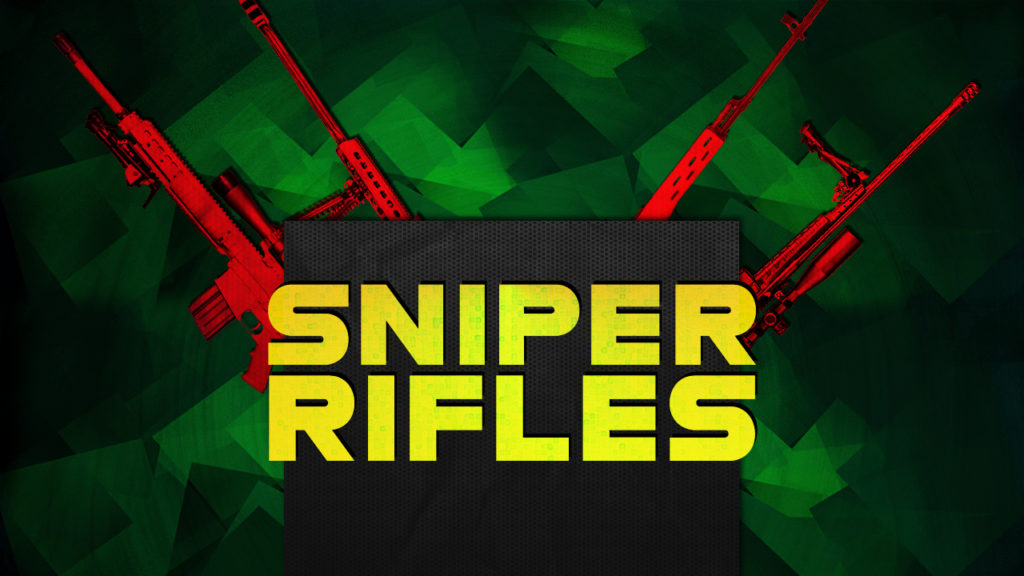


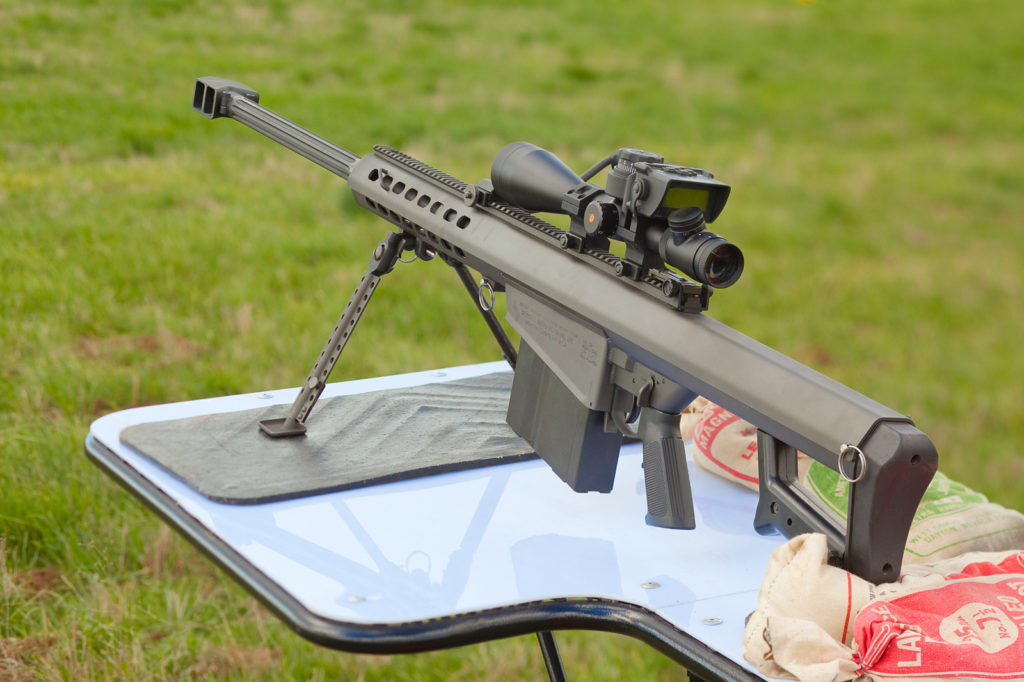

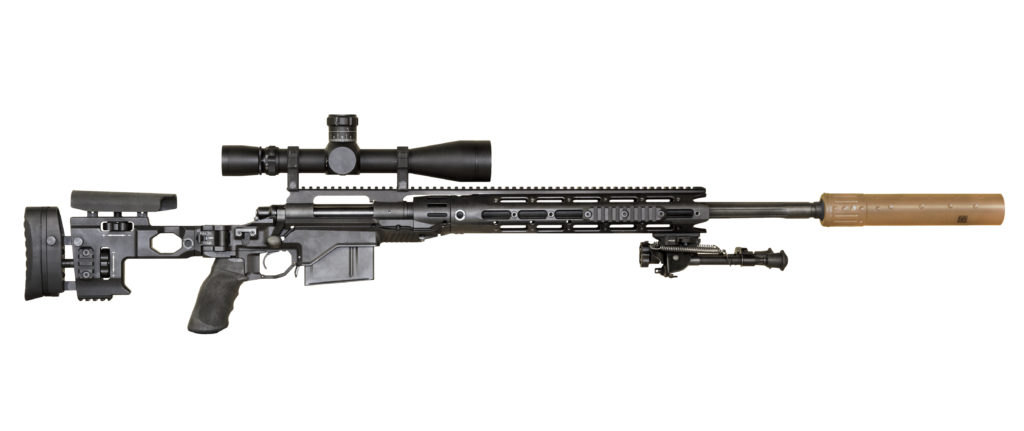




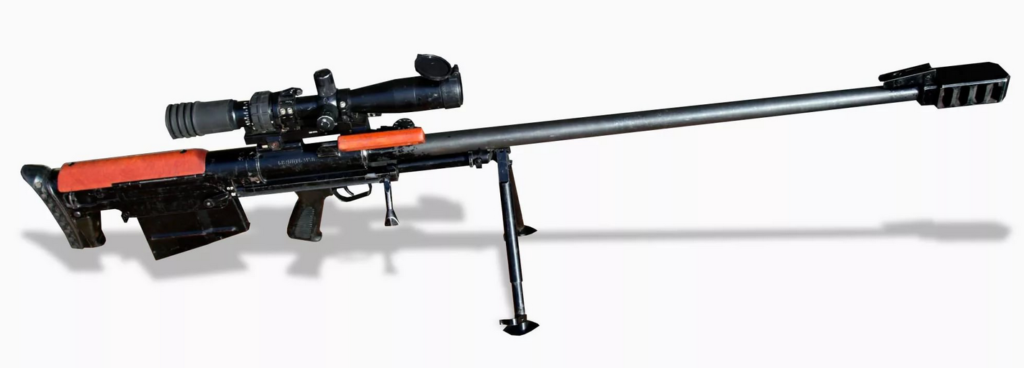
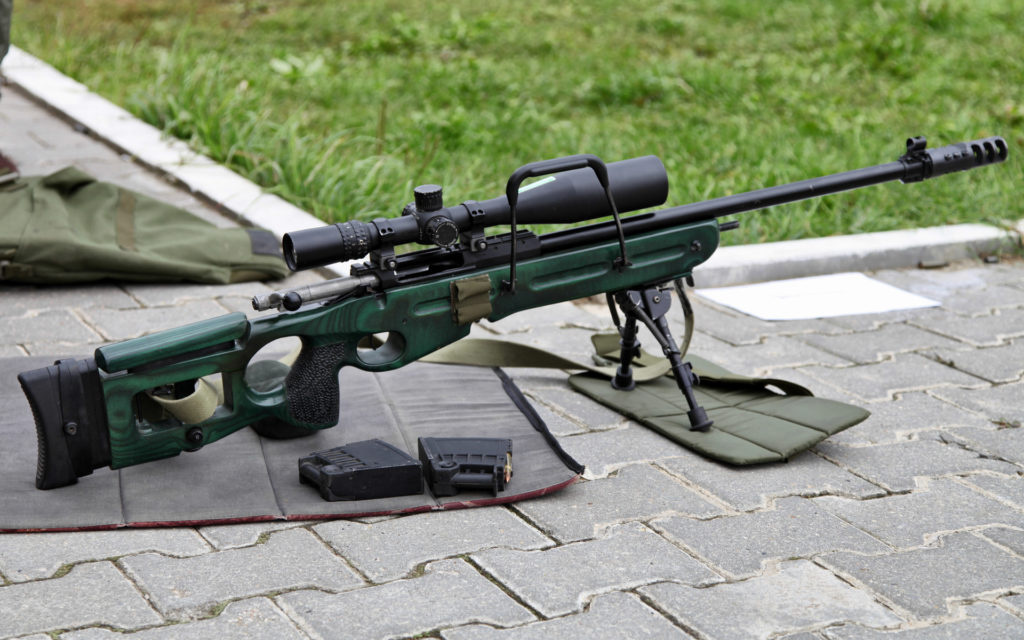
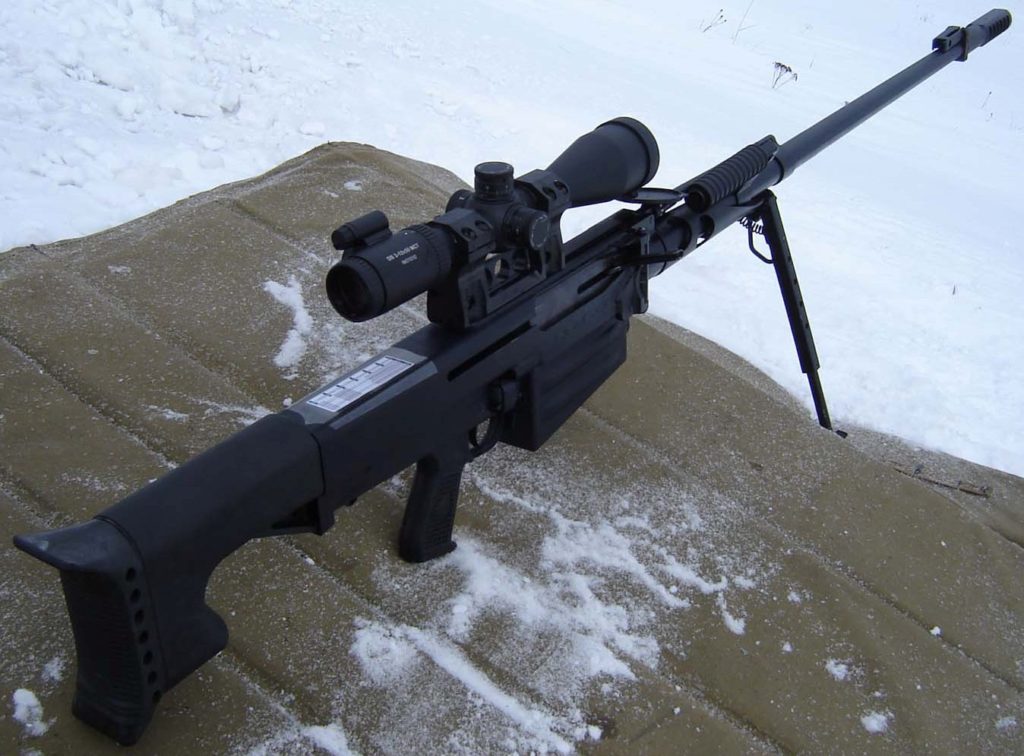
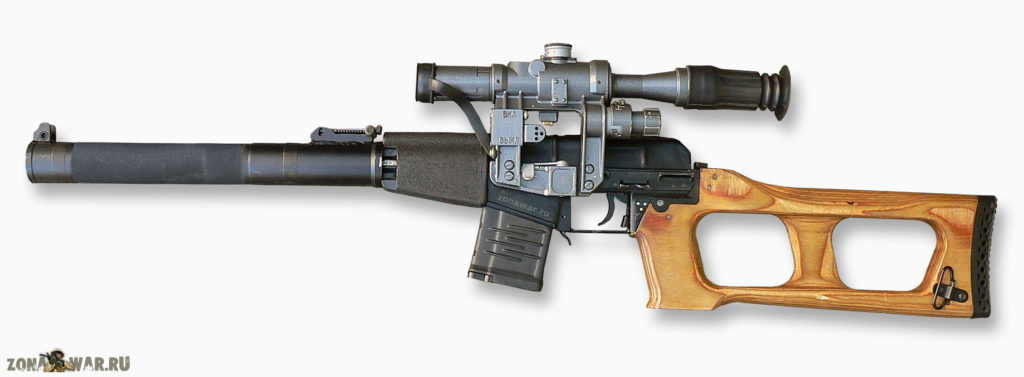
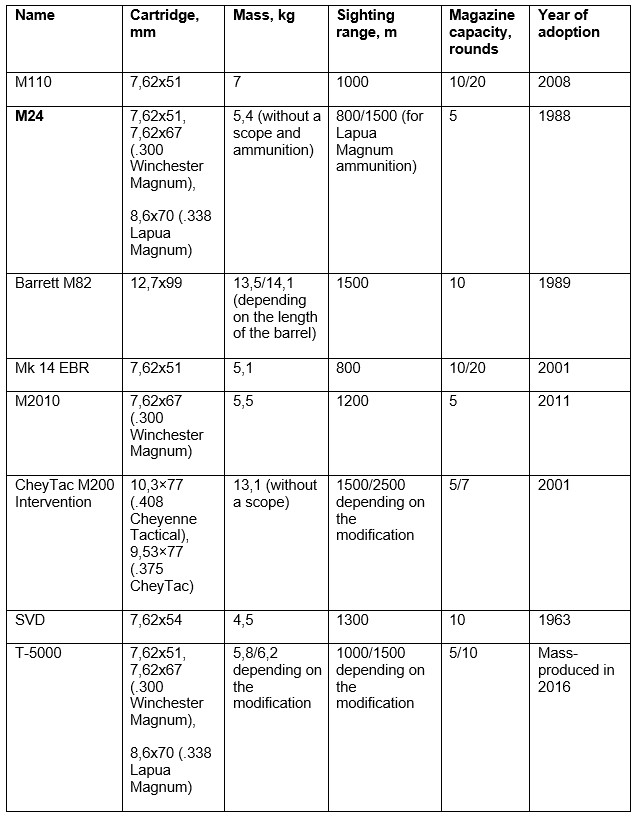

Good analysis, but it unfortunately lacks an overview of tactics and organization of marksmen units.
Exactly. We already have an analysis on the issue. It will be released soon.
Sincerely yours,
SF Team
I was wondering if SouthFront could make a short article about the film A Sniper’s War (2018). It is a documentary about a sniper fighting for the pro-Russian rebels in Eastern Ukraine.
Mainstream media is completely ignoring it, and it is subject to online “review bombing” by supporters of Ukrainian regime. It is one of the best documentaries I have ever seen, and I believe it deserves full support from this site and it’s visitors.
https://vimeo.com/ondemand/asniperswar
https://www.youtube.com/watch?v=m5wwAfoVD3E
It may sound strange to some not in this field but the best sniper training can be done with air rifles. The air rifle to the fire arm has a relativity of 1×10.
So if you shooting with a scoped air rifle 100 meters is the same calculations your brain does when you using a fire arm at 1000m, for example. With an air rifle shooting several hundred rounds in one go is not unusual especially with the modern PCPs. Also using a powerful break barrel, as the HW90 for example, all of your upper body will be exercised better than spending 2 hours in the gym.
I completely agree, powerful break barrels are great tools because you have to pay even more attention to variables and compensation. Ammo is cheap and it forces you to learn about ballistic even at relatively short shots. I will say through, I did look the rifle you mentioned and I have no idea why any one would drop 600$ on this, gamo , Benjamin and even umarex all put better performing rifles for about 1/3 of the price. It’s got the cocking effort of my octane elite but goes 350 fps slower. Gamo and umarex top rifles like the octane and magnum cap out at ~ 250$ and can send a 14g 22 at supersonic speed with dieseling.
our air rifles are not $600 my friend not are cheap. let me show you what we use and with those we are dropping wild pigs, where I live and not only.
The break barrels we use HW 90s, is for exercise the upper body so you are able to hold free hand guns rock solid. And with my lapua, I shot at 2000 meters inside a 5 inch circle. But I never been able with it to train, as I can with an air gun. It is also is not a matter of cost. Get an air gun and try to shoot a bird at 100 meters and you understand what I am saying. And for an air gun 100 meters equals 1000 meters with the lapua I am using.
Sending a pellet at super sonic speeds make her highly inaccurate and also the pellet will tumble. Pellets are not made to break the sound barrier. The best velocity for pellets is in the 900- just under 1000 fps. Pass that with a pellet and you have a very inaccurate gun.
But it will better explained to you in this 2 videos that a very good friend of mine made. He is an enthusiast as I am. And we do shoot golf balls out to 300 yards now, for fun.
https://www.youtube.com/watch?v=WD5VUxZLW7c
https://www.youtube.com/watch?v=jDek86GoLII&t=682s
https://www.youtube.com/watch?v=R1vqi9z3tg4
Watch part two first is what may interest you more.
You horrendously missed my points. Yes the gun you mentioned the hw 90 is actually over 700$ without taxes for the 22, and it’s listed as 820 fps so it probably shoots closer to 600-700 after oil burns out of the barrel. I have a gamo fusion, gamo swarm and a umarex octane elite which cost about 700$ combined. A 46 pound cocking effort is great for a work out but is really bad considering how slow the fps is, my gamo swarm is rated at 970 fps and has a 25 pound cocking effort….. I was just saying that with other brands a cocking effort that high puts out 1200+ fps. I completely agree with everything else you said about air guns, the umarex elite is great because it’s got the heavy cocking effort and with scope it’s about 10 pounds , as well as a recoil system thats closer to a repair gun than an air rifle.
my HW is shooting 950 fps using 16grains in .177. is not a .22 and i don’t use it for hunting but target shooting and the benefits of exercising. Also I am not going to go into a stupid controversy of which gun is best. The best gun is the one does the job, you using it for. The gamo are ok but are not precision guns and never used one or plan in the future to do so.
And with your gun that shoots 1200+ try and shot same hole 10 shots at 50 meters and tell me how you manage. You speak from the position of ignorance and it is obvious you have no idea of ballistics, or snipping so first educate a little then we discuss the fine points if you wish.
That’s fine but you started talking about training with 177 and 22 but talk about air gun ballistics like you are hunting with a couple hundred grain 357+ slug. Yes you yourself said the higher cocking effort helps you steady aim with a traditional grip and that’s exactly what the heavy weight does too. I’m sorry but alot of modern high end 177 definitely are designed to go supersonic. My octane is rated 1200 but as I said it won’t hit that with dieseling, and yes I’ve tested at 25, 50 and 100 , supersonic doesn’t effect accuracy at those ranges, it still hits a about a 2×2 group at 100 yards, one thing I did notice is that loose seated and janky pellets will drift more at slower speeds. In 177 this rifle goes 1400 without me doing anything, go check out the gamo magnum, 177 is rated at 1600 for and 22 is at 1300, it is the only rifle i can think of that’ meant to go that fats though
You are willingly choosing to shoot a really heavy pellet out of a low energy gun. HW 90 can go super sonic with light pellets, that’s probably why you think it’s less accurate. Accuracy with air guns is balancing muzzle energy with a good pellet weight. I think you are confused on how.muvh of a difference the grain actually makes. If you could shoot that same 16g pellet at super sonic speed you would see it’s the same accuracy. At 100 yards yes a light 177 will be less accurate but it’s not speed its purely because the light pellet is effected by environmental factors. I don’t usually shoot light pellets, I like 18g + for 22 but those supersonic 14g hit a closer group and have more downrange power.
I shot 100 meters with my break barrel, and as i said been 40 years a sniper what you saying it is BS of an ignorant person who trying to sound as he does know what he is talking about, but has absolute no idea what he is talking about.
And you did not follow my advice to watch the videos I posted at least to save some face and be a bit educated so you don’t sound like the ignorant you do sound. I will not bother to answer you again I did so up to this point trying to share knowledge, you obviously looking how to present your self as the smart ass of the site.
Pellets are NOT designed to break the barrier kid. Now take a walk and clear what is left between your ears. Any one who knows the basics in sniping and has use air guns for practice will tell you what I told you, and not try to change the laws of physics, just to sound as ignorant you do.
You are the one that’s questioning basic laws of physics, when you shoot something in a straight line, and ignoring all outside factors, how long it’s going to keep going in a straight line will be directly proportionate to how fast it was going. It’s a really simple concept and idc if Jesus is telling me it’s wrong I’m going to question it. Yes pellets lose momentum quicker than real bullets and are not meant for those speeds but it’s doesn’t change the fact that alot of modern air rifles in fact do go that fast . You are implying that the pellets will lose accuracy after hitting a certain speed and completely negates the benefit of the speed, that’s radical claim you actually need to back up….. A pellet that comes out at supersonic speeds will only stay supersonic for a shot distance anyway.
I agree with everything on the training, I was just criticizing the specific gun you mentioned.
Only thing I completely don’t understand is “supersonic is less accurate” , I don’t understand how that makes sense, faster pellets are less effected by atmospheric pressure, wind and drop slower. That’s why supersonic 177 is more accurate than 22s but the 22s can compensate by shooting a heavier pellet which can resist the drop too.
it is not a matter of weight is a matter of design and pellets are not designed to go supersonic. I posted couple of videos if you watch them they answer your question.
If you use bullets then you can go supersonic but for the time the only airgun that is designed for that is the HUBEN and slugs are not readily available, so we make them ourselves.
Nope it is not strange. An air rifle, especially a match riffle is ultra precise, and the basic breathing and trigger techniques can be taught at virtually no expense. When the basics are OK, the student moves on to a relatively cheap calibre 7,62x 51 example wise, and learn to absorb recoil, then to the more heavy stuff. And then it becomes very expensive, at least in Europe.
That was how I was taught to shoot. Army gold mark, and countless deer.
Sporting a Sauer 90 .308 full stock today, with 6×42 Zeiss Vario on top.
A match gun is good for 10 meters and it will not help much in what we speak. When you train for sniper with an air gun, you want to be able use it in extreme ranges i.e. over 100 meters. That is how you learn to hold over and calculate the wind as well the range. Then you have the shadows and the shooting from light to dark and vise versa. We don`t go to a range to shoot. We shoot in nature and under extreme conditions most of the time.
https://www.youtube.com/watch?v=R1vqi9z3tg4
Sure , sure all cool , do what ever you want. You are Americans, gods chosen, besides the Ieraelis, so you must be right. I will see myself out
i am not american dinky bell.
Agree on use of a precision air rifle as a means to gain initial physical and mental conditioning as a sniper, as well as a means to stay in condition when not at actual firearms range. ACCURACY is not always found at upper reaches of velocity, more powerfull.
It is a shame Southfront chooses to focus on WAR PORN, rather than actual useful analysis of current events. Sniper rifles are only really useful as devices of TERROR- as the jews prove each time they invade Gaza, Lebanon etc- placing jewish snipers safely on the roofs of stolen homes, so the can butcher women and children that dare to venture outdoors.
Google “ONE SHOT, TWO KILLS” to see the OFFICIAL t-shirts the Israeli government presented to graduates of jewish military sniping schools in Israel.
For every sniper that bravely takes on invading soldiers, a THOUSAND snipers work on behalf of the invading forces. War porn like this article is designed to NORMALISE the obscenities of aggressive warfare and groom the reader into thinking such things acceptable and commonplace.
Far better forms of analysis, never seen here of course, would examine how TINY numbers of West trained ‘ISIS’ males were able to enter sophisticated settlements in Syria and take control against far far far greater numbers of male residents- males who had been trained by the government to be beta cucks who would always bend the knee to apparent alpha males.
ISIS and the other terror gangs NEVER had the numbers- but what they did have was psychology- where one murderous bully is sadly worth one hundred ordinary beta males- beta males trained to be frightened to even contemplate using violent methods to stand up to the terrorist bully.
Look at the ‘civilised’ West, where literally thousands of civilian males will give way to even one uniformed state thug, even when (as America shows again and again) that uniformed thug is clearly behaving counter to any reasonable principle of law and order. This beta cuck training was infinitely more relevant to the events in Syria than talk about specific military ‘toys’.
Why were the Vikings ‘famed’ in History? Cos after the fall of the Roman Empire, the Roman world reduced to a load of small local ‘kingdoms’ where the ‘king’ kept a tiny ‘policing’ force entirely meant to keep his own people in their place. The ‘king’ disarmed his own people to avoid revolts. And the ‘king’, fearing palace coups, ensured his ‘guard’ was no more powerful than was needed to keep the plebs down.
So the Vikings, small in individual raiding teams, encountered nothing but male cucks ruled over by pathetic little men, and these they over-came with ease, dispite the massive disparity in numbers.
The PSYCHOLOGY of modern terror by the Deep State is vastly more relevant and interesting than war porn discussions about various forms of war equipment.
Syria was ruined and Libya fell for such reasons of psychology. Interestingly Iran is smarter, and proof against such psychological plays- which is why the coming Iran war will simply be the greatest war of total destruction yet seen in Human History. The mega-violent nature of this war dissuades certain forces from willingly seeking/supporting it in the West- a problem the Deep State is constantly working on.
Thank you for the interesting comment. We had content about the importance of the psychological aspect in wars.
Sincerely yours,
SF Team
This is a cropped self image taken in Las Vegas from a contact op with the Tall Whites in 100+ degree Fahrenheit heat south of Area 51. The folding carbine is a Sub 2000 in .40 S&W with a 30 round magazine and 85 meter beam light: https://uploads.disquscdn.com/images/7f52b4cc7472cc4ee6488c9d00cdb791f46d92fb40baf362f0f6b7123653ce2f.png
Animal and human mutilations have been recorded throughout history. This is a picture from a recent case. Mine aren’t this severe, which is why they weren’t fatal and I survived the attack.
And have grown in my beard high enough to cover up most of the scarring below my left eye. There is information from the Meier case about off planet suppression of ET contact. That has been my experience also. https://uploads.disquscdn.com/images/cc423d7df6bdaff197db4833872586dda7da14bbd9d4e4af0fa1c0a5a6494b18.png
Mother of God.
What happened to this poor woman? Couldn’t it just be animals preying on the body?
I think that the same or similar technology that I encountered was used on her. It’s some type of non thermal dematerialization technology. I don’t think that animals did this to her, and I know that they didn’t do it to me.
This is a large animal mutilation that I discovered east of Dark Canyon, north of Skin Walker Ranch during a contact op in northern Utah. The spin had been severed at the neck and the bone and muscle below that were missing. https://uploads.disquscdn.com/images/c48d3a74ea0eb665eac4c1b987b0a5d8d350031b057ade4a85b383c465a8fe38.jpg
This is security equipment from the northern Utah op. https://uploads.disquscdn.com/images/1c95bd3eb922ff88034ef17d66abd42a32431812411c31c3361caac3827c84a8.jpg
This is from the northern Utah op. The .223 sport utility rifle had the pistol grip added a few days later. The 30-06 is over my shoulder. https://uploads.disquscdn.com/images/d7ba1f4c846606e63c1ed697b5c3e00d9184dd2149e05089568dde6c72ac8059.png
This is a picture from an ET contact recon op in the canyon and basin formations where I found the unidentified trail print of what may be a non threatening 500 to 1,000 pound exoskeleton creature from outer space with the ability to levitate off of the ground. https://uploads.disquscdn.com/images/3dcc728821313e1b819aa7606e1cdd4410499778a03b77e63d6356e571da32f3.png
This is a break down .338 Lupua that would be an upgrade from my 30-06 anti material rifle build. And could be more effective against ships, probes and difficult to take down life forms. Planning and equipping to deal with off planet hostiles trying to suppress contact with positive ETs is part of the operations that I conduct.
http://www.defensereview.com/wp-content/uploads/2015/01/DRD_Tactical_KIVAARI_Quick-Takedown_Semi-Auto_.338_Lapua_Magnum_Rifle_Carbine_DefenseReview.com_DR_3.jpg
https://uploads.disquscdn.com/images/6fa1290d7548da2c7df2f94b94dd891fd37aa337b2fdf15e5b6771084a972d17.png
http://www.armslist.com/posts/1602500/evansville-indiana-ammo-for-sale–338-lapua-armor-peircing-ammunition
The weather has warmed up some since last week when I tried unsuccessfully to reach the mountain river gorge due to the snow depth on the washed out closed roadway.
Mountain cargo bike with side baskets deployed in the open positions.
https://uploads.disquscdn.com/images/2e36999116a74fae187f6c0ab5b9085d4f78926e85dd5352311ed6a89958e778.jpg
I am woods born and never once have I seen an alien, non terrestrial type. or a bigfoot packing a weapon.
Although when in HUNTING season stealth mode of using binocs, I did spot some sub human mentally deficient types looking at me through their scoped rifles did sit behind a tree real quick, to meditate over wether to blow their leg off.
Thankfully, for their sake, my breathing and mental training restrained that urge.
I don’t think that they’re indigenous to the planet or in some cases this dimension. And that interaction is done on a case by case basis with select individuals that they’re interested in for good or bad reasons. Or by happenstance, such as if they’re taking samples for scientific research and people see them by mistake.
Last nights op was uneventful, there wasn’t any non conventional activity. The road was clear of snow from the road block to the LZ 5 miles in. The snow line had receded from last week to the LZ. The LZ was snow covered. The adjacent campsite 200 feet down the declining path to the river front was clear of snow. I did a site check of the campsite, LZ and surrounding area. There were elk prints, but no bear, cat or wolf prints.
The additional clothing that I brought for meditation/telepathy work wasn’t warm enough, and I couldn’t sit still for any length of time without getting cold. So I decided to leave and bring some warmer clothing next time. I only spent an hour at the LZ/campsite before heading back.
These are pictures of the campsite and equipment load out: https://uploads.disquscdn.com/images/3ccb5d320222d1ddf2f6ddc84d7f40f2c0b0f7ae540a9aed68d1eae804c25f31.jpg https://uploads.disquscdn.com/images/9195e25aa4119fcf79c6fc7d77b77b2ab01daba1b27b666b704c2c12c7b88c5f.jpg
try not to forget, taking your pills, every day.
Coming from someone ignoring an abundance of prima facia evidence. Your ridicule and insults reveal your aversion to reality.
This is your world view:
https://i.guim.co.uk/img/static/sys-images/Guardian/Pix/pictures/2010/2/23/1266950200282/flatearth-001.jpg?w=700&q=55&auto=format&usm=12&fit=max&s=bf6eaa168796cfa6e620861694196939
moonshine is good for the soul try using it, it may also activate a second cell between your ears.
I value my brain cells, and alcohol is also a carcinogenic. I don’t need prostrate problems.
you have so few it make sense to value them.
If you could disprove my comments you would, but you can’t, because they’re true, so you post nonsense instead to illustrate your stupidity and rejection of truth and common sense.
SVP is chambered with 8x54mm. Just a little corection.
I am not some world renound fire arm expert, but let me say right out front that whomever wrote this article sure as he’ll is not one either.
All info seems more on ability of Using Google search
As to an under two hundred yard sniper rifle , no such varmit unless you count air rifles that can ichochet and take out an eye.
And not mentioned are precision rifles, rifles that have true sniper usable capabilities.
Any decent HUNTING grade rifle made in US has moa and under right out of box or a short break in and is one reason gun and pawn shops have so many older weapons.
Factor brag, my mid level cost 7mm mag hunting rifle with great optics can smack 12″ steel at 1200 yards if I do my part and first study enviro conditions.
YOU FIGURE MOA.
IT is cartrige design as much as mechanical build that determines sniper rifles capabilities, only the conditioning of sniper can use rifles potentials.
He’ll a good man with an A R of military rack can hit, open sights, combat efficiency at 600 meters but not be a sniper, nor his weapon either.
50 CAL as a military round was not deemed legal as an anti personal round, and no known body armor will stop it or the 338 lap.
Almost all US in use sniper rifles, unlike foreign nations, are developed by non State owned military minds.
Will not go into mental conditions or pathology of what makes snipers tick.
Not for that matter those who worship them.
RIFLES AND MEN ARE BUT TOOLS.
In war legal or not dont count much. And attacking a person here that put an article, that it is accurate in what it says, it seem to me you missed the point and try to say something but you say nothing, just used too many words.
The great irony…..the most elite russian unit, the KSO have Steyr SSG 08 from Austria.